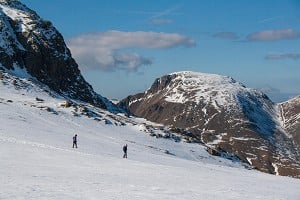
Environmental historian Amanda Vestergaard outlines some of the key ways mountaineering, climbing, hillwalking and other mountain sports have impacted the mountain environments they populate over the years...
"Thousands of tired, nerve-shaken, over-civilized people are beginning to find out that going to the mountains is going home; that wildness is a necessity; and that mountain parks and reservations are useful not only as fountains of timber and irrigating rivers, but as fountains of life." - John Muir, Our National Parks, 1901
Although it is over a century since environmentalist and outdoorsman John Muir wrote these wise words, they seem eerily relevant to the growth we are seeing within mountain sports today. In the modern world, mountains symbolise adventure, health, and 'the good life', but they have simultaneously come to represent wildly contested landscapes, in which conservation versus public access has to be constantly negotiated.
It's worth taking a journey through time to contemplate not just the physical environmental impact of the sports we so enjoy, but also how these sports have influenced people's understanding, use and appreciation of the mountains throughout the centuries.
19th Century: Pilgrims, Gentlemen and Romantics
"... Highest of all, where white peaks glanced,
Where glist'ning streamers waved and danced,
The wanderer's eye could bare view
The summer heaven's delicious blue;
So wondrous wild, the whole might seem
The scenery of a fairy dream."
- The Lady of the Lake, Sir Walter Scott
Until the end of the 18th century, western civilizations mostly thought of wild nature as something to be feared, avoided, and preferably tamed. It wasn't until the beginning of the 1800s that wild and rugged landscapes such as mountains came to be appreciated as places of spiritual awakening, and transcendental existence. Especially amongst poets and painters of the romantic era, the mountains came to serve as artistic inspiration, for example eliciting poetic verses such as the one by Sir Walter Scott presented above.
19th century romanticism hereby helped to reimagine nature (especially wild landscapes such as mountains) as something to be pursued for personal enlightenment. This ultimately led to 'mountaineering' being taken up by upper class gentlemen as a form of noble intellectual and spiritual endeavour.
In 1857, the Alpine Club was formed, and became the first ever club devoted solely to mountaineering. Although the club in its early days made no official statements concerning the protection of mountain environments, environmental appreciation was deeply rooted in the club's ethos. The club's first president, John Ball, had a passion for natural science and glacial research, and the creation of the club itself is seen as deeply rooted within 'the Golden Age of Alpinism': an era that saw important scientific research mixed with recreational mountain pursuits. The Alpine Club ultimately shaped many of the mountain ethics we still try to keep in mind when we venture into the mountains today, and use to limit our impact on these fragile environments.
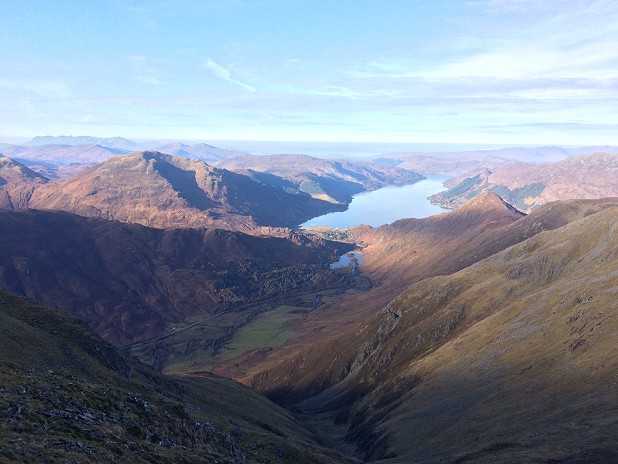
Meanwhile, the club was also the first to promote international travel in pursuit of mountain adventures. This is a tradition that persists in the sport today, and has an increasingly problematic (not to say somewhat ironic) impact on the mountains we love, and travel to enjoy.
Overall, however, the 19th century served as a crucial period for establishing a public love for mountains. Although access to these majestic landscapes was still limited to men of respectable social and academic background, the mountains quickly gained a new significance in the eyes of people through romanticised images dispersed by way of contemporary literature and art.
Shortly before the turn of the century in 1895, the National Trust for Places of Historic Interest or Natural Beauty - what would later become the National Trust (and in 1931, the National Trust for Scotland) - was founded to conserve natural heritage in England, Wales and Northern Ireland.
20th Century: Environmentalists and Thrill Seekers
By the early 20th century, the romanticised mountain ideals of the previous century had given rise to a new era of mountaineering. This was the era of familiar characters such as John Muir and Yvon Chouinard, who gave birth to new wilderness ideals, and ultimately inspired the early environmentalist movement. This would eventually come to represent the beginning of concerted efforts to preserve undeveloped landscapes and advocacy against industrial development in the mountains.
Due to their innate love for the mountains, mountaineers came to serve as guardians and spokespeople for the unique landscapes they cherished. In the 1930s, the Scottish Mountaineering Club led a fundraiser to enable the National Trust to purchase the land surrounding Glencoe, making it one of the first Scottish nature reserves. Percy Unna, the club's president, donated a significant amount of money himself, on the condition that a set of guidelines for management of the land be overheld. These guidelines have later come to be known as the "Unna Principles", and include statements concerning public access, the minimisation of human intervention, and the prohibition of deer stalking.
By the middle of the century, improvements in transport saw mountain environments once considered remote and elusive becoming increasingly accessible to the public. Combined with other factors such as improvements in gear quality, increased leisure time and more disposable income, this generated a massive boom in outdoor recreation throughout the 1960s and '70s. This period also saw the emergence of 'non-traditional' mountain sports such as skiing, snowboarding and mountain biking.
These new activities brought even more people into the mountains, and access to mountain recreation began to be enjoyed by a wide variety of people. No longer were the mountains the sole domain of elite gentlemen and upper class academics. This slow democratisation of access paved the way for a more widespread public recognition of mountain environments, and people began to value these wonderful places as natural amenities that could be used to draw tourists and income to otherwise remote and rural communities.
Throughout the 1980s however, people were coming to the stark realisation that more mountain enthusiasts, many of whom were unfamiliar with traditional mountain etiquettes, also resulted in more strain on the mountains' environmental resources. In 1983, a community-focused conservation charity, The John Muir Trust, was founded to protect and repair wild places. By 1995, the International NGO Consultation on the Mountain Agenda identified tourism as one of 9 key risks to mountain environments. Among the main concerns were footpath erosion and wildlife disruption, along with waste left behind by visitors.
In 1996 alone, an estimated total of 767,000 people made use of the Scottish mountains. As people no longer needed extensive knowledge of mountain environments to access and enjoy them, increased demand unfortunately brought a simultaneous decline in awareness amongst visitors concerning their negative impact and how to minimise it. Towards the end of the 20th century, these combined factors were putting a huge strain on our beloved mountain landscapes, a far cry from the ideals promoted by John Muir, Percy Unna and their fellow environmentalists a few decades earlier.
21st Century: Commodification and Adventure Tourism
In spite of efforts to control and minimise impacts of increasing interest in mountain recreation, environmental issues related to growing numbers of mountain visitors were a burden carried into the 21st century. However, as increased numbers started to threaten access rights, the early 2000s also became the years of increased efforts to combat the negative impacts of the sports we so enjoy.
These years saw the emergence of environmental guidelines from multiple clubs and organisations, involving everything from climbing and hillwalking to mountain biking and river kayaking. The BMC started hosting events designed to promote the clean up of popular crags, and in 2008, their "Climb it, Walk it, Protect it" campaign clearly urged mountain users to become mountain advocates and environmental protectors. Later, the BMC's 2016 "Mend Our Mountains" campaign managed to crowd-fund £100k for footpath repairs, and in 2019 raised £800,000.
On the other hand, the 21st Century has also seen a larger, more abstract shift in how mountain recreations are practised by the public. In an increasingly developed world, mountains offer an escape from everyday stress, and people are willing to pay for it. This has led to a flourishing of corporate interest in the mountains. Corporate involvement now takes place in the form of adventure tourism, guided eco-tours and comfortable accommodation in remote places.
Building upon the romantic ideals of the 19th century, mountain sports are now marketed as the key to a happier and simpler life. By constructing the idea that you can buy adventure, the mountain sport industry has perpetuated the commodification of mountains for recreational use. Through advertising, the commercial industry is 'selling' the mountains to a wider variety of people, many of whom may not otherwise have considered the mountains a desirable travel destination, attracting individuals who are not necessarily passionate about the mountains and their environmental wellbeing.
Mountain "ethics" and "protocols" can quickly be forgotten in the rush for money on one hand, and neatly-packaged adventure on the other. As a result, many visitors to the mountains today don't necessarily feel a sense of belonging or attachment to the mountains. Thus, willingness to protect them is low, and there is little sense of responsibility amongst individual users.
When considering the influence of corporate presence within the mountain recreation industry, the most important thing to remember is that it is mountain communities that bear the burden of the presence of these companies, whether that be environmental degradation, or simply a larger strain on local resources. While mountain tourism and recreation perhaps has the potential to serve as a less damaging form of local income than extractive industries such as forestry and mining, this will only be the case if mountain communities themselves are actively included in this new industry.
So-called "weekend-warriors," who drive to mountain locations for only a couple of days, for example, tend to spend little money in local communities as they bring everything they need from home. Although these 'soft tourists' may not necessarily interact with the corporate adventure tourism industry, they are part of the same era of mountain recreation, ultimately characterised by mountain commodification in terms of guides, footpaths and mountain infrastructure. Spending less time and money in a place can result in less consideration of its natural environments.
This said, the involvement of corporate businesses in mountain recreation is not all bad, since commercialisation has also led to democratisation: more than ever before, people from any demographic, social class or economic status are able to access the mountains. Pursuing these sports requires a lower level of commitment, both economically and time-wise, and this has opened up the mountains to people who might previously have found this type of recreation unachievable and inaccessible. To enjoy the mountains today, all you need is leisure time - a luxury that is decreasing for many of us - and enough money to pay your way into the mountains.
Moving Forward: From Weekend-Warriors to Enduring Mountain Guardianship
The character of mountain recreation has changed dramatically over the past 100 years. More people are taking advantage of the joys that the mountains bring, and few people would argue that that is not a wonderful evolution. However, even activities presumed to have a low environmental impact such as hill walking will have a damaging environmental effect if the number of people doing them is big enough. This begs the question: how do we protect the environment meanwhile ensuring that everyone has access to it? How do we control numbers without removing tourism as a viable source of income for mountain communities? These are ongoing conflicts within the organisations we trust to manage and care for our mountain areas.
As the ways in which we occupy and use mountain landscapes change, so too must the strategies we use to maintain them. This, for example, involves a shift in how we view public lands, moving from resource extraction to environmental protection for public enjoyment. Mountain recreation has now become a multi-billion-pound industry, and as such, public lands now have a higher economic worth if left in pristine conditions. We must ensure that this economic input is used to feed back into conservation and environmental restoration projects, and find sustainable ways of harnessing the economic power that the growth in mountain sport popularity has brought with it.
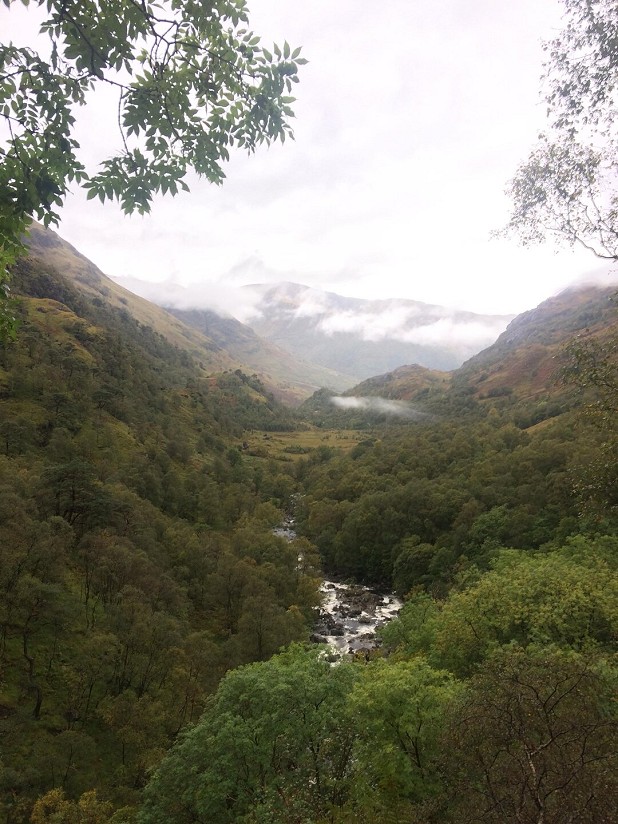
One example of this is the National Trust's "maximum access, minimum impact" policy, whereby conservation for future generations takes precedence over present day recreational activity. The Trust is also a keen advocate for the circularity between access and conservation, suggesting that one will promote the other by providing outdoor experiences that will eventually lead to environmental education, and a better understanding of conservation principles.
Local community involvement will also play a key role in negotiating increased populations in the mountains, especially if new environmental projects are to gain the support of local community members. Involving these communities in conservation efforts and citizen science projects designed to protect their surrounding mountain environments could be one way to achieve a more balanced relationship between mountain recreation, mountain ecosystems and the communities that call them home.
Furthermore, it must be ensured that the economic benefits of growth in visitor numbers help these communities regain control of local resources, ultimately giving locals more power over the policies and political decisions that impact them.
Building on this, instilling a sense of community amongst individual mountain users may help shift people's frames of mind from short-term personal gains to long-term prosperity of both sport and the environments it relies upon. This will become increasingly important as more people start taking to the mountains for one-day excursions squeezed in when work and other responsibilities allow. In this case, fostering a more personal and emotional connection to the mountains amongst urban-dwelling mountain users will be key, if we are to inspire a return to 20th Century traditions of environmental stewardship. Ultimately, it is our shared love for mountains that brings us into these beautiful yet fragile environments. It is high time that we harness this love to come together to act as mountain protectors and advocates.
Because we constantly bear witness to the natural forces and changes taking place in mountain landscapes, we mountain recreationalists hold a unique position from which to spread awareness to the larger population. We must return to thinking of human activity in the mountains as part of a larger system of natural processes.
Venturing into these majestic landscapes for pleasure, whether that be for climbing, hill walking or any other activity, is a privilege. It is our responsibility to ensure that this privilege is maintained for future generations. Informing people of the vast history, culture and traditions that tie us to the mountains can be part of this. By reminding people of mountain recreationalists' early role in the environmental movement, we can aim to shape a community devoted to the protection of mountain environments today, and long into the future.
Sources:
Beedie, P. & Hudson, S. (2003) "Emergence of mountain-based adventure tourism," Annals of Tourism Research, [Online], 30 (3), 625–643.
BMC (2017) "A Brief History of the BMC" The British Mountaineering Council [Accessed 28 Dec 2021] https://www.thebmc.co.uk/a-brief-history-of-the-bmc.
Godde, P. M. et al. (1999) Tourism and Development in Mountain Regions, [Online], Wallingford, UK: CABI Publishing.
Hanley, N. et al. (2001) "Go climb a mountain: an application of recreation demand modelling to rock climbing in Scotland," Journal of agricultural economics, [Online] 52 (1), 36–52.
McMillan, L. (2006) "Guiding back from the precipice: Leveraging the power of recreational users to protect mountain environments," in The Amenity Migrants: Seeking and Sustaining Mountains and their Cultures, 34–51.
Parsons, D. J. (2002) "Understanding and managing impacts of recreation use in mountain environments," Arctic, Antarctic, and alpine research, [Online] 34 (4), 363–364.
Reichwein, P. (2017) "The Alpine Club of Canada's 'Mountain Heritage': Adventure and Advocacy in the Twentieth Century and Beyond," International journal of the history of sport, [Online], 34 (14), 1501–1520.
The National Trust for Scotland (2005) "Access, Enjoyment and Education," NTS Planning and Policy Department.
The National Trust for Scotland (2021) "Wild Land Policy," NTS [Accessed 16 Feb 2022] https://www.nts.org.uk/what-we-do/advocacy/wild-land.
The National Trust for Scotland (2022) "Our History," NTS [Accessed 16 Feb 2022] https://www.nts.org.uk/what-we-do/history.

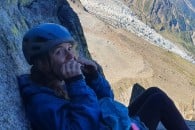

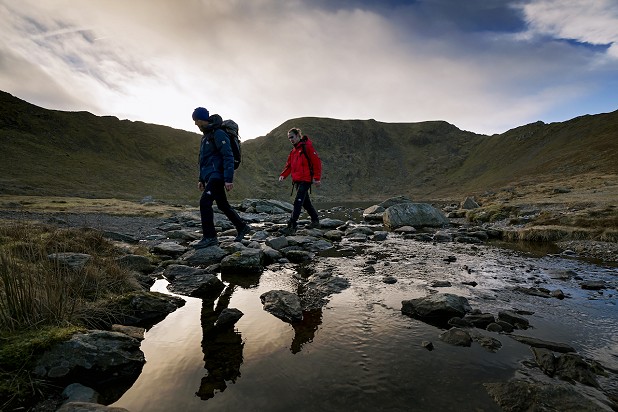

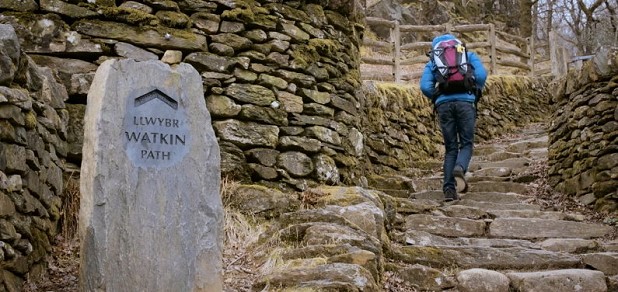
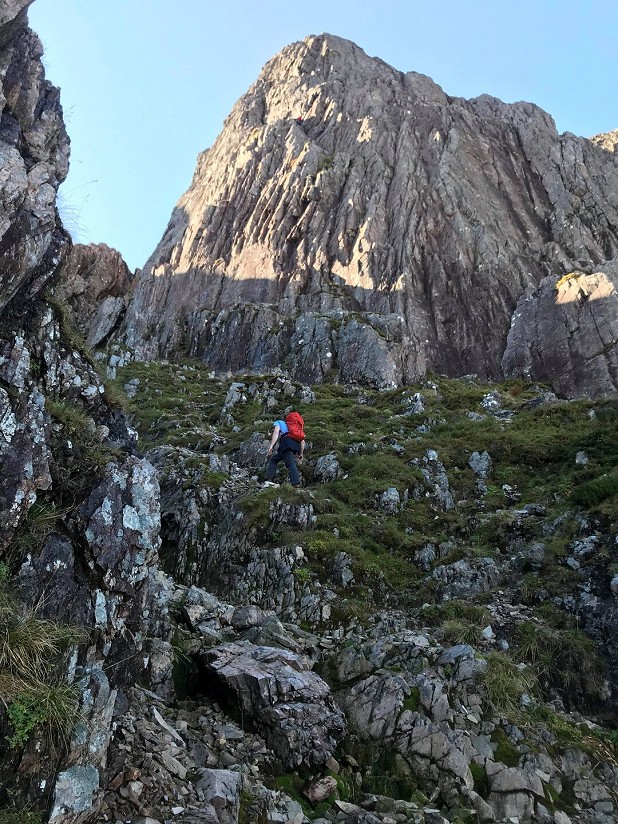
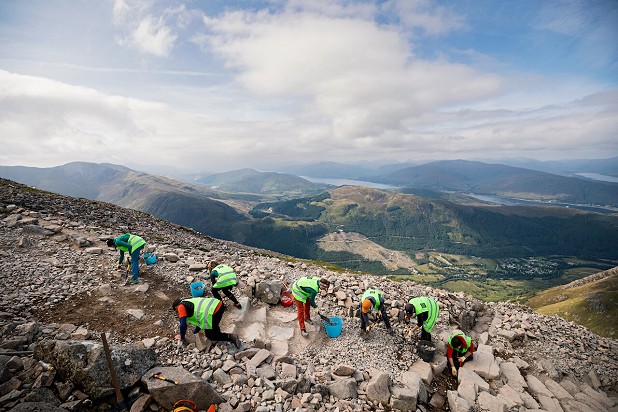

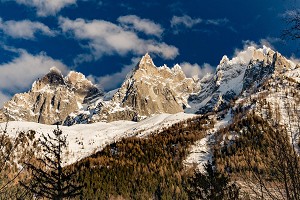





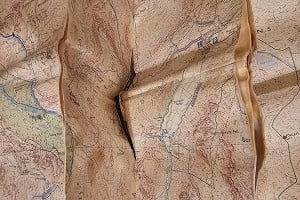
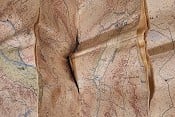
Comments
A nice summary but a shame it only really discusses the UK, are there any lessons to be learnt from other countries, either positive examples to maybe follow or approaches to be avoided ?
ps - I suspect that in Scandinavia, skiing would be seen as 'traditional', even in Scotland skiing dates back to the late 19th century.